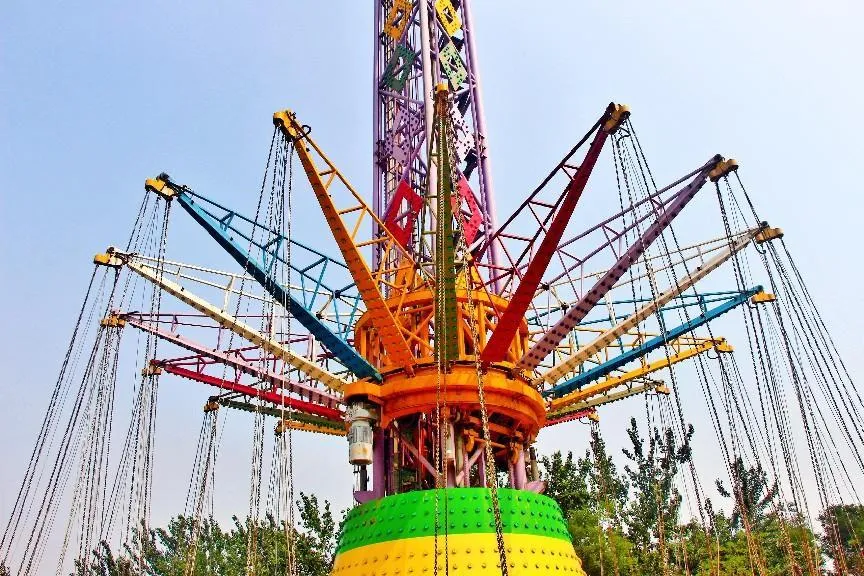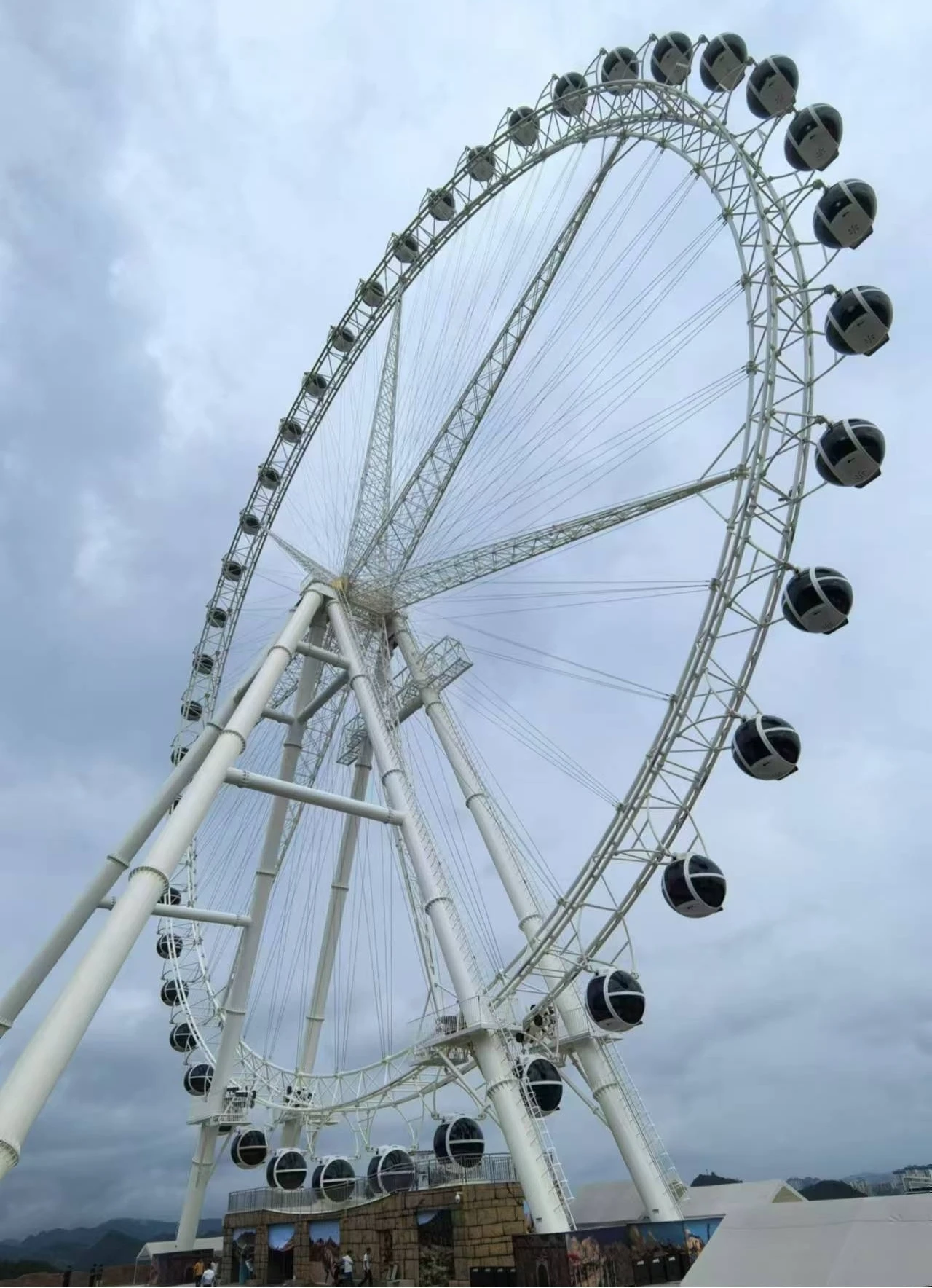- Albanian
- Arabic
- Belarusian
- Bengali
- Czech
- English
- French
- German
- Hebrew
- Hungarian
- Indonesian
- irish
- Italian
- Japanese
- kazakh
- Persian
- Russian
- Thai
- Uzbek
- Vietnamese
Jan . 22, 2025 03:31
Back to list
different kinds of roller coasters
Roller coasters are exhilarating testaments to human ingenuity, designed to deliver thrills, excitement, and a dash of fear. Across the globe, amusement parks are home to diverse types of roller coasters, each offering unique experiences. Delving into the world of roller coasters can help enthusiasts and park operators better appreciate and select their next adventure. Here’s an exploration, drawing from years of expertise and authoritative analysis, of some of the most captivating types of roller coasters.
Dive Coasters introduce a dramatic pause before plummeting through near-vertical drops. This anticipation enhances the fear factor, leveraging suspense to heighten the adrenaline rush. Known for their massive drops and inversions, these coasters create memorable experiences that draw frightened screams and joyous laughter alike. Griffon at Busch Gardens Williamsburg is a quintessential dive coaster, providing sweeping scenic views before the heart-pounding descent. Inverted Coasters take the ride experience to a new realm by placing the track above riders, freeing legs to dangle and heightening the sense of vulnerability. This format allows for more dramatic and unconventional inversions and twists, like those found in Banshee at Kings Island – a coaster known for its relentless and adrenaline-charged experience. Finally, the innovative Hybrid Roller Coasters skillfully blend the best features of wooden and steel types, creating a unique ride encompassing the strengths of both materials. These coasters harness the aesthetic aura of wood with the intricate designs and smoother rides characteristic of steel structures. The groundbreaking Steel Vengeance at Cedar Point has set a benchmark in the hybrid category, offering a ride experience that is both thrilling and versatile. In sum, this diverse landscape of roller coaster types reflects the creativity and daring of designers and engineers. From the nostalgic timber of wooden structures to the sleek, gravity-defying feats of steel, roller coasters offer a variety of thrills suited for every type of thrill-seeker. Understanding the intricacies and unique aspects of each type empowers enthusiasts to make informed decisions and enriches their overall amusement park experience, enhancing the joy and excitement that come embedded in the world of roller coasters. By staying abreast of the latest developments, parks can likewise ensure they offer exhilarating, safe, and memorable experiences that keep visitors coming back for more.


Dive Coasters introduce a dramatic pause before plummeting through near-vertical drops. This anticipation enhances the fear factor, leveraging suspense to heighten the adrenaline rush. Known for their massive drops and inversions, these coasters create memorable experiences that draw frightened screams and joyous laughter alike. Griffon at Busch Gardens Williamsburg is a quintessential dive coaster, providing sweeping scenic views before the heart-pounding descent. Inverted Coasters take the ride experience to a new realm by placing the track above riders, freeing legs to dangle and heightening the sense of vulnerability. This format allows for more dramatic and unconventional inversions and twists, like those found in Banshee at Kings Island – a coaster known for its relentless and adrenaline-charged experience. Finally, the innovative Hybrid Roller Coasters skillfully blend the best features of wooden and steel types, creating a unique ride encompassing the strengths of both materials. These coasters harness the aesthetic aura of wood with the intricate designs and smoother rides characteristic of steel structures. The groundbreaking Steel Vengeance at Cedar Point has set a benchmark in the hybrid category, offering a ride experience that is both thrilling and versatile. In sum, this diverse landscape of roller coaster types reflects the creativity and daring of designers and engineers. From the nostalgic timber of wooden structures to the sleek, gravity-defying feats of steel, roller coasters offer a variety of thrills suited for every type of thrill-seeker. Understanding the intricacies and unique aspects of each type empowers enthusiasts to make informed decisions and enriches their overall amusement park experience, enhancing the joy and excitement that come embedded in the world of roller coasters. By staying abreast of the latest developments, parks can likewise ensure they offer exhilarating, safe, and memorable experiences that keep visitors coming back for more.
Next:
Latest news
-
Flume Ride-Hebei Zhipao Amusement Equipment Manufacturing Co., Ltd.|Thrilling Water Attraction&Customizable DesignJul.30,2025
-
Flume Ride - Hebei Zhipao Amusement Equipment | Water Coaster, Thrilling DescentJul.30,2025
-
Flume Ride - Hebei Zhipao | Thrilling Water AttractionJul.30,2025
-
Flume Ride: Thrilling Water Attraction by Hebei Zhipao|Log Flume Manufacturers&Flume Ride DesignJul.30,2025
-
Flume Ride-Hebei Zhipao Amusement Equipment Manufacturing Co., Ltd.|Thrilling Water Coaster, Safe DesignJul.30,2025
-
Flume Ride-Hebei Zhipao Amusement Equipment Manufacturing Co., Ltd.|Thrilling Water Attraction, Safe DesignJul.30,2025
